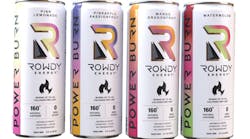The pandemic has impacted the agriculture sector in many ways, but grant funding is one aspect that remains consistent. Previous years might have seen delays with grant program releases, but government agencies have responded to the urgent needs of the industry over the past year with increased reliability in getting funding to companies.
Although many pandemic-specific program deadlines have passed, critical grants are still available to benefit food producers and manufacturers. For example, the USDA Local Food Promotion Program, USDA Farmers Market Promotion Program and USDA Regional Food System Partnership Program are still on the horizon.
USDA grants offer potential recipients’ opportunities to gain funding for expanding marketing, buying equipment or revving up processing efforts. That’s advantageous, especially for companies struggling with lower sales revenue. However, applying for agriculture grants isn't without its logistical challenges.
Most grant programs have very tight time frames for submission, with deadlines sometimes 30-60 days after the program is released for applications. It’s not much time to plan projects and pull together documentation, but leaving money on the table is rarely a wise move. So how can your business navigate all the intrinsic challenges of grant writing and successfully submit for USDA agriculture grants? Start with these recommendations:
1. Estimate your project costs accurately
Before you begin writing agriculture grant proposals, you need a solid understanding of the scope and costs of the project you plan to fund with grant money. Plan how funding will support those costs and how it will accelerate your project and its profitability. Showing that you have a strong grip on realistic costs will go a long way toward proving your commitment to maximizing every grant dollar received.
Seek out quotes from equipment vendors, marketing contractors, advertising companies and other providers. Use the information to plan out a complete cost timeline. Your step-by-step plan should include every financial touchpoint, such as how much you expect to spend weekly on labor and materials. One caveat: Remember to bulk out your projections reasonably to cover unexpected overruns and market inflation rates.
2. Storyboard a proposed action plan
After coming up with your project cost estimates, further flesh out your application with action steps on how you will execute the grant-funded project if you receive the award. Detail which partners you'll work with, who on your team will be involved and the approximate dates when project-related activities will occur.
Along the way, be careful not to shortchange the time or resources it will take to complete your project. Projects often take much longer — and cost more — than initially expected. When working on a one-year grant, it's helpful to create a month-by-month road map showing each step toward accomplishing your goals by the end of the year. Three-year grants offer a bit more flexibility because you have more time to meet stated goals, but you'll still want to detail year-by-year action plans.
3. Create a clear and convincing case
Document why your company believes in the project and why grant funding will be a worthy investment. Use market research and not just a “gut instinct” to back your beliefs. You can also use internal data to show how not proceeding with the project could hurt overall productivity.
The grant for which you're applying may refer to the “why?” as a “statement of need.” Don’t overlook the importance of this chance to convince a reader that it’s essential for your project to get off the ground. However, be clear in your language: The grant application reader might not know your industry as well as you do. Use plain, direct wording to illustrate your message.
Don't let accelerated timelines turn you away from writing agriculture grant proposals. With the right grant writing strategies, you'll have a shot at securing the money you need to spur your business forward. Just remember that the process is much more than checking boxes and reporting numbers. An effective grant application tells a compelling story and provides agencies with a robust overall picture of your vision.


